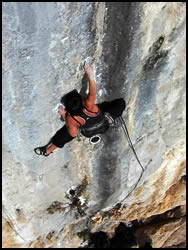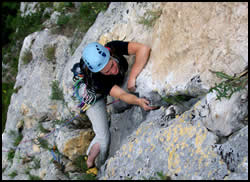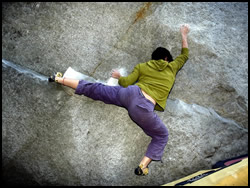Climbing
The Alpes Maritimes are full of so many cliffs that climbing has always been the heart of my business. It is my original passion. But what is meant by this term ? Do you know the different practices associated with this simple word ? To understand what it is about, a few explanations are necessary.

Crag climbing
This is the most common practice, which consists in climbing a wall of a single length of rope, usually between 10 and 40m, then going down to the ground. This is the best activity for beginners because it's suited for learning basic maneuvers in belaying, for getting to know, trust and control the equipment as well as for discovering the first emotions related to height. The professional will be there to explain, correct and guide you in appropriate routes corresponding to your level.

Multi-pitch
Multi-pitch climbing requires some self-assurance and confidence with heights. A multi-pitch is when the wall is so high that to ascend a route, one or more stops at belay stations are necessary. With my knowledge of the terrain, I will guide you in nice routes and teach you the tricks related to multi-pitch technics.

Traditional climbing
Traditional climbing is when you climb a route with no bolts. It is up to the climber to keep safe by placing equipment like nuts, friends and other protection. This kind of climbing requires mental strenght and experience. A professional will help you acquire both in a safe manner.

Bouldering
Unlike other practices, bouldering does not require a rope since we climb on rocks that are sufficiently small so that we don´t get hurt when we fall. A mattress called "crash-pad" provides a softer landing. Bouldering allows one to focus on the movement itself. It's a very natural form of climbing, very playful and friendly if practiced correctly.
